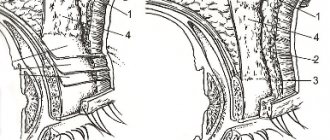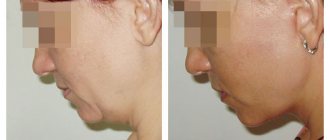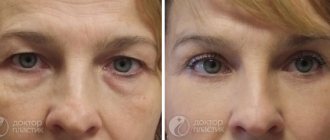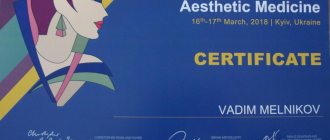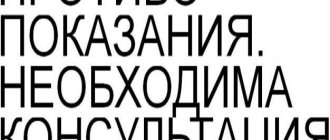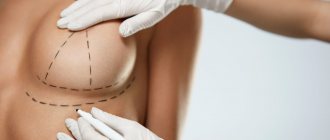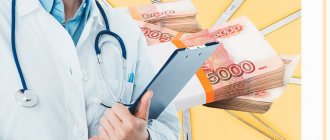Consultation
Rhinoplasty of the nose, which is one of the most popular types of plastic surgery in Armenia, involves the elimination of congenital or acquired defects of the nose using plastic surgery methods.
Surgical rhinoplasty allows you to simultaneously solve problems of both a medical and aesthetic nature. The operation is performed under general anesthesia and is the most painless compared to many types of plastic surgery. The decision to perform an operation is made after a series of consultations between the patient and an experienced surgeon, where he receives full information about the indications, contraindications and possible complications associated with the surgical and postoperative period, as well as undergoing a full medical examination to ensure there are no contraindications.
Rhinoplasty in Armenia
Rhinoplasty is one of the most popular types of surgery. It is designed to correct congenital and acquired deformities, as well as eliminate problems with nasal breathing. Nose surgery is equally effective in both men and women, as well as in younger patients - while corrections for children are carried out exclusively for medical reasons, while in adults they can be carried out at will - if it is necessary to obtain a beautiful form of the main decoration of the face.
Rhinoplasty of the nose
Before and after
Before and after"
Rhinoplasty
Types of rhinoplasty
There are many types of rhinoplasty, each of which is designed to solve a specific problem and can affect different types of tissue.
- Plastic surgery of the base of the nose is aimed at reducing the width of the nostrils. After surgery, subtle scars may remain at the base of the nose. The operation is performed both for aesthetic reasons and to reduce possible swelling of the nose after another operation in this area. Often patients are representatives of the Negroid and Mongoloid races.
- Plastic surgery of the tip of the nose. The most complex type of rhinoplasty, which can radically change the patient’s appearance, but requires a great deal of experience from the surgeon. Corrects hookedness, upturning, axis displacement and other external defects of the tip of the nose.
- Columella correction. The columella is the skin part of the nasal septum; in fact, it is a bridge between the nostrils. It may be too wide or too narrow, retracted or protruding. The defect can be corrected using surgical correction.
- Correction of the shape of the nose. Giving the back of the nose the correct shape - smoothing the hump, aligning the axis. Affects bone and cartilage tissue.
- Nose contouring. A non-surgical method for correcting small external defects of the nose through injections of hyaluronic acid.
- Septorhinoplasty. Correction of a deviated nasal septum to facilitate nasal breathing and solve the problem of snoring.
- Conchotomy (including laser). Partial or complete removal of the hypertrophied mucous membrane of the nasal turbinates in case of problems with nasal breathing.
- Electrocoagulation. Gentle effect of electric current on the nasal mucosa in cases of slight hypertrophy of the nasal turbinates.
- Augmentation rhinoplasty. This type of rhinoplasty is aimed at correcting nasal defects by increasing the size of the nasal skeleton (usually used in cases of secondary rhinoplasty).
- Grafting. Transplantation of your own cartilage to create the desired shape of the nose. Cartilage tissue can be taken from the nasal septum, ear, or rib.
- Laser rhinoplasty. The instrument used here is a laser instead of a scalpel, which makes the operation less traumatic.
- Reconstructive rhinoplasty. Required to correct the results of previous operations.
- Non-surgical rhinoplasty. Modeling the shape of the nose using dense gel fillers.
Indications for plastic surgery rhinoplasty
These include the following: excessive length; presence of a hump; large nostrils; saddle shape; thickening, sharpening of the tip; low back; asymmetry of the nostrils; “eagle”, curved organ of smell; disproportion in comparison with the size of the face - too large or small size; deformations as a result of injuries, unsuccessful surgical interventions, including reconstructive ones; congenital defects in tissue structure; snub-nosed form; the presence of a bulge in front of the tip; functional indications - impaired nasal breathing; deviated septum; fractures; burns and frostbite.
Contraindications to plastic surgery on the nose
Rhinoplasty cannot be performed with absolute contraindications, which include: serious diseases of the heart and blood vessels; liver diseases; heart failure; bronchial asthma; oncological diseases of any localization; diabetes; bleeding disorders - low platelet counts, etc.; allergic reactions to medications used for pain relief; mental disorders; immunodeficiency and diseases that accompany it; severe infectious diseases. Relative contraindications are the following: age up to 18, and in some cases up to 20 years - this is largely due to the growth of cartilage and the high probability of changes in indicators; age after 45 years – the question of the need for nose surgery in this case is decided individually; pregnancy, breastfeeding - as a rule, intervention to improve shape is postponed for this period; menstruation; respiratory diseases.
Rehabilitation after nose surgery
Rhinoplasty of the nose, like other surgical interventions, involves further recovery. This period completely depends on the scope of correction, while staying in a hospital or medical center for the entire time, as a rule, is not required - the patient is sent home the very next day. In the event that only cartilage tissue was the object of influence, the recovery period varies between 7-10 days. Working with other departments and bone tissue requires a slightly longer rehabilitation – from 14 days. Surgical rhinoplasty involves further compliance with the specialist’s recommendations: Wearing a retainer - a splint, plaster or collodion sticker. It must be worn for 5-7 days along with splints and other materials installed if necessary. This is important for fixing the new shape and performing effective straightening or correction. Treatment of the nasal passages - for this purpose it is better to visit a doctor, however, some recommendations about taking medications and using external agents must be followed independently. It is important to carefully follow the surgeon’s advice - do not visit saunas, steam baths, beaches, do not wear sunglasses (this can only be done about 2-3 months later), limit physical activity and bending.
Secondary (repeated) rhinoplasty
Repeated adjustment is most often required when the results of a previous intervention are unsatisfactory. Before deciding where to make the correction, it is necessary to take into account many nuances - it requires great skill of the doctor, since correcting the consequences of unprofessionalism is much more difficult than working with the original data. The secondary correction procedure is relatively more complex. Otherwise, it also consists of a preliminary conversation with the doctor, preparation and compliance with the rules during the rehabilitation period. The cost may vary depending on the degree of complexity, i.e. the intervention can be either cheap or significantly more expensive.
Rhinoplasty after injury
Reconstructive adjustment is a category of types of surgical interventions that are widely used in patients with previous injuries. Rhinoplasty in Moscow, the prices of which depend on the volume of work to be done, provides patients with ample opportunities to restore the anatomical parameters of the olfactory organ. Recovery can be carried out with the transplantation of one’s own tissue - using lipolifting or the introduction of cartilage tissue of the auricle (without losing its shape or disturbing its appearance). The need to use additional methods is decided individually with the doctor.
Rhinoplasty in Armenia
Clinic building
Free Breathing
Rhinoplasty hump
Rhinoplasty result
Rhinoplasty of the Nose
Rhinoplasty in Yerevan
Salon Waiting
Operation
The majority of plastic surgeries performed in Armenia over the past few years have involved operations to straighten a deviated nasal septum and correct external defects of the nose.
Straightening a deviated nasal septum (septoplasty) serves medical purposes. Taking into account the characteristics of the patient’s body, the operation can be performed either under general or local anesthesia. In addition to restoring normal physiological breathing, septoplasty will help get rid of a number of problems caused by a deviated septum.
The duration of the operation is 60-90 minutes, after which the operated patient is placed in the hospital for 1 day. Rhinoplasty of no less common nasal defects, such as the presence of a pronounced hump, a hooked nose, or the absence of a pronounced bridge of the nose, are considered more complex. The operations are performed under general anesthesia and last 2–3 hours. In this case, the patient’s hospital stay for 1 or 2 days is mandatory.
Operations during which, at the request of the patient, problems of both a medical and aesthetic nature are simultaneously solved are called rhinoseptoplasty.
All patients need to know!
Price
The cost of the operation in this case is fixed, and its slight fluctuation is possible only if your CT results reveal something unexpected. In other cases, the cost does not depend on the complexity (“nose tip” and full rhinoplasty cost the same). More information about the procedure and terms of payment, as well as what is included in the cost of the operation, is here:. An automatic converter to popular currencies works at the same link. And by the way, if you have problems with nasal breathing, we will correct them at the same time, this is included in the price.
Prepayment
A surgeon, anesthesiologist, assistants, laboratory assistants and many other clinic staff are involved in the organization of each operation; rooms are booked in advance and the operating schedule is approved. Therefore, when a patient suddenly refuses surgery, more than one surgeon finds himself in an awkward position.
So that we can be sure that you are treating the upcoming operation responsibly, a fixed prepayment is required to make an appointment for a specific day. If everything goes “according to plan,” you pay less for the operation by the amount of the prepayment. If you change your mind about having surgery, but inform about it less than two weeks before the date of the operation, the prepayment will turn into a fine and will remain at the clinic, and you will need to pay again to make an appointment again. Please take this seriously and understandingly.
Registration for surgery
You can choose the date of the operation after you go through three mandatory stages - CT scan, modeling and tests, and make an advance payment.
1. CT is short for “computed tomography.” This, in turn, is a non-invasive method for studying the condition of human internal organs. I am interested in the condition of, as you might guess, the nose and “paranasal sinuses.” What you should do: 1) go to a clinic that has a full-fledged CT scanner (not a dentist's office) and ask for a “CT scan of the nose and paranasal sinuses with a slice thickness of 0.5 mm.” After which all this needs to be sent to me along with the conclusion of a specialist (radiologist). Don’t be alarmed, the article at this link explains in detail and with pictures what files are, where to get them and how to send them correctly: .
2. You send your photos for modeling and within a week I will send you the result. Looking at a snapshot of your future self will help you make the right decision. Detailed photo requirements are on this page: . If you like your future nose, then you move on to the third stage - checking your health.
3. Checking your health status, that is, taking tests at your place of residence. You are taking tests so that I can make sure that you have no contraindications for surgery. What tests need to be taken are described here:
If everything is fine with the previous points and you have received confirmation from me that your general health allows you to undergo rhinoplasty, you choose the day of the operation and make a fixed prepayment for the clinic details. Please keep in mind that the day from which you can register for surgery is constantly changing. You can find out the current one on my website: .
Please note that the day before surgery, you will need to be tested again at 9:30 am. You will leave the clinic the morning after surgery, but you will need to come back for a dressing change a week later. If you do not live in Armenia, please plan your arrival and departure dates accordingly.
The site has an article for patients (), which covers all these points in more detail. Be sure to read it at your leisure.
Postoperative period
After the plastic surgery is completed, a plaster cast and a fixation plate are applied, and tampons are inserted into the nostrils to prevent bleeding. In the first days, the patient will feel pain in the nose, swelling and bruises under the eyes. But don’t worry, after 7 – 10 days, all the above-described negative consequences will gradually disappear. If the operation and postoperative period proceeded without complications, then within 10-15 days new beautiful aesthetic changes in the shape of the nose will become noticeable, and the final stabilization of the new nose shape will take place 6-10 months after the operation. Until the end of this period, in order to avoid possible complications, you should strictly adhere to the doctors’ instructions.
Rhinoplasty
Closed rhinoplasty – the main advantage is the absence of incisions. This type of nose surgery is relatively low-traumatic and preferable for patients, but not for surgeons, since one has to act literally blindly, and if significant changes to the nose are necessary, there are limitations for the surgeon Open rhinoplasty is the most commonly practiced and effective type of rhinoplasty. Indicated both for aesthetic plastic surgery to change the shape of the nose, and for medical intervention to correct a deviated nasal septum. Non-surgical rhinoplasty is an injection method for changing the shape of the nose. Used when cosmetic changes are necessary. Secondary rhinoplasty is a repeated surgical intervention after a previously unsuccessful operation or with an unsatisfactory result. Technically, this operation is considered more complex than the primary one and requires the highest qualifications from the surgeon performing it. In some cases, there is a need to transplant cartilage grafts from the rib or from the auricle.
What you need to know: Length of stay in the clinic: the average length of stay in the clinic is one day (you need to arrive at the clinic an hour before the operation, you can return home the next morning). Duration of the operation: 1.5−3 hours Before the operation: consultation with an otolaryngologist and the results of medical tests prescribed by the surgeon are required, as well as an examination by an anesthesiologist. Rehabilitation period: 2 days with nasal packs, possibly with a stuffy nose, swelling and bruising in the periorbital areas, 7-10 days with a splint on the nose, the need to fix the nose with special plasters during the next days, possibly weeks after removing the splint; prohibition on wearing glasses, active tanning, playing sports, visiting the steam room and swimming pool for 1.5–3 months after removing the splint; within a week after the operation, in some cases (if necessary), taking antibiotics Final result: the final shape of the nose can be seen a year after the operation, but the preliminary result is visible immediately after removing the plaster cast . What tests should be taken before the operation?
- General blood test, with leukemia formula
- Coagulogram (aPTT, thrombin time,)
- Biochemical blood test (total protein, total and direct bilirubin, urea, creatinine, ALT, AST,
- Glucose (in blood).
- General urine analysis (+ sediment).
- HIV, Hepatitis B, Hepatitis C
- Blood type, Rh factor
- ECG
Rhinoplasty in Yerevan is very popular among Moscow residents. In just two weeks you can get a nose job and get to know the oldest capital of the world.
